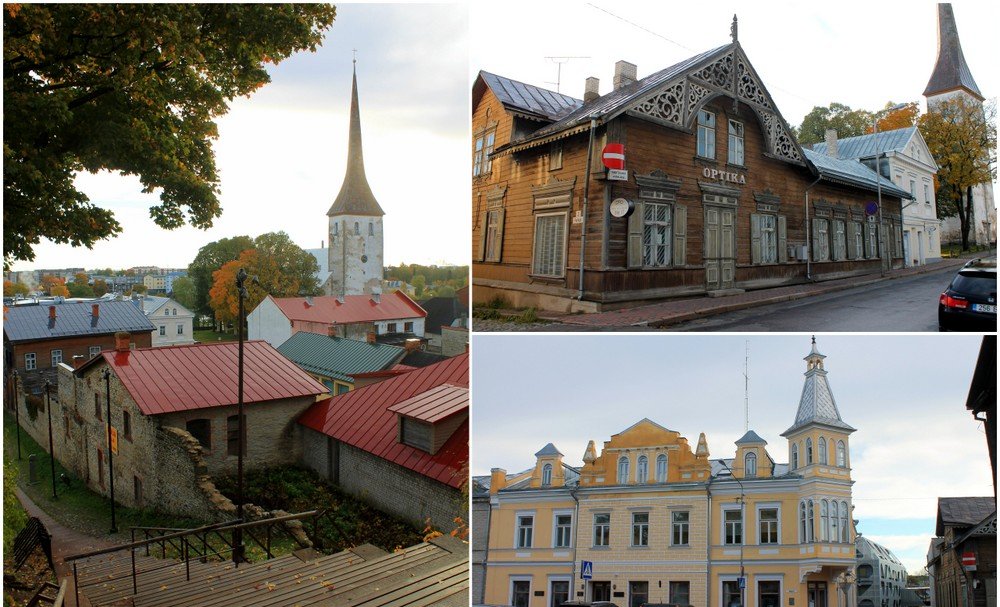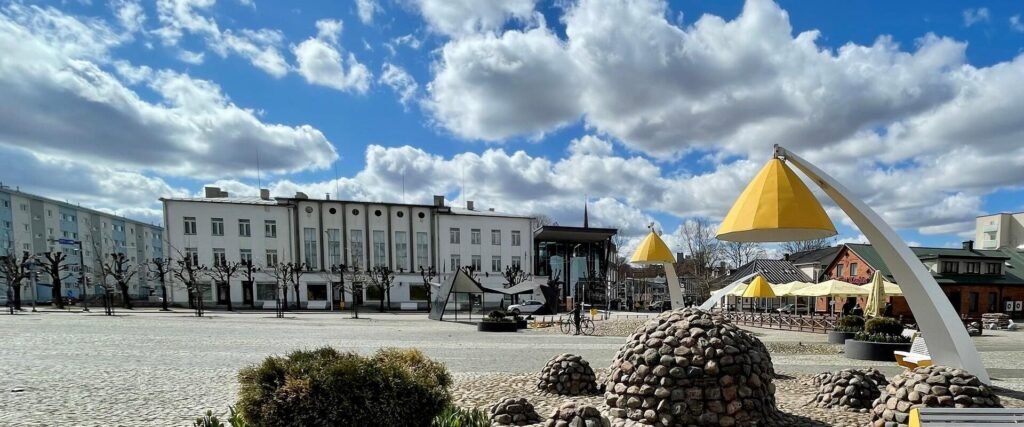Rakvere city in Estonia; 16.4 thousand inhabitants. Stanisław Herbst was born in Rakvere in 1907 – Polish historian, professor at the University of Warsaw and the Military Political Academy, president of the Polish Historical Society. The local castle was occupied by a Polish crew in the years 1602-1605. It is the fifth largest city in Estonia and is located in the northern part of the country, 20 km south of the Gulf of Finland and about 100 km east of Tallinn and west of Narva.

- Church of the Holy Trinity. This is a late medieval church with an unusually high and slender spire, which was built in the 17th century. Built in the early 15th century, the church was a refuge during the Livonian War (1558-1583), during which it suffered much damage. The nave of the church was even in a state of collapse due to demolition. However, it was rebuilt in the years 1684-1693 as a three-nave chamber church. In the years 1703-1708 it burned down twice, and then rebuilt in the years 1727-1730. The existing church tower was built in 1852. The stone part is 37.8 m high, but the church has a total height of 62 m. The history of the church is connected with the tombstone of Bishop Arnoldus H. Annabat. Eye-catching Baroque masterpieces of stucco – the pulpit and the altar wall, can be found inside, alongside other works of art.

- Rakvere Market Square. A small square in the center of Rakvere and probably the most modern in Estonia. It was completely renovated in 2004, when strange yellow canopies resembling umbrellas or lampshades were installed. In 2010, the urban sculpture “Young Man on a Bike Listening to Music” was added to the umbrellas. It is dedicated to the citizen Arvo Pärt, an Estonian composer who grew up in Rakvere. Today, his music is played every day at noon by the Holy Trinity Church.

- Rakvere Teater. On weekends, performances are usually held, on weekdays – a cinema, and sometimes concerts are organized in the cafe. The pride of the locals. Rakvere is considered the smallest city in the world that has its own theater and theater troupe. This location is the historical center of Rakvere: there were ancient Estonian settlements here, and the Rakvere Cultural Center is also located. Formerly a classicist manor, in 1940 it was rebuilt into a theater, to which a new building was added. Although the manor and the theater are made in completely different styles (the theater itself is permeated with the spirit of functionalism), they look surprisingly harmonious. Behind the building is a beautiful landscape park with ponds. The theater’s repertoire is 20 performances, although it is not known who in Rakvere works on them.

- The castle of the Rekvere Order. The first fortifications on the castle hill appeared at the beginning of the 13th century, when it was captured by the Danes. In those years, there was either a wooden or an unpretentious stone fortress, which the Russians tried to capture. After the Estonian lands passed from Denmark to the Livonian Order, in the middle of the 14th century, a large, well-fortified castle was built on the site of the old one. Some fragments can be seen to this day. At the turn of the 16th-17th centuries, the castle was destroyed as a result of numerous wars between Sweden, Poland and Russia. Then the residents used the ruins as a source of stone, until the first attempts at restoration began at the beginning of the 20th century. However, the main restoration took place already in the late 70s of the 20th century. Now it is something between ruins and a full-fledged castle. The castle is very picturesque (inside and out). To get inside, you’ll need to buy a fairly pricey ticket that includes various entertainments such as archery, a forge, ancient armor, and the infamous “hell” chamber. In the summer, the castle functions as a medieval tavern (no potatoes), but if you don’t plan on visiting, you can limit yourself to the external exam.

- The statue of the bull Tarvas. It is considered the largest animal statue in the Baltic States. According to legend, once in the world there was an ox the size of the distance between Tartu and Rakvere, which destroyed everything in its path. One day it was killed, and its head fell into Rakvere. So the city began to be called Tarbapea (bull’s head), and the rest went to Tartu, called Tarbatu (bull). The attitude of the inhabitants of Tartu to this legend is cautious.

